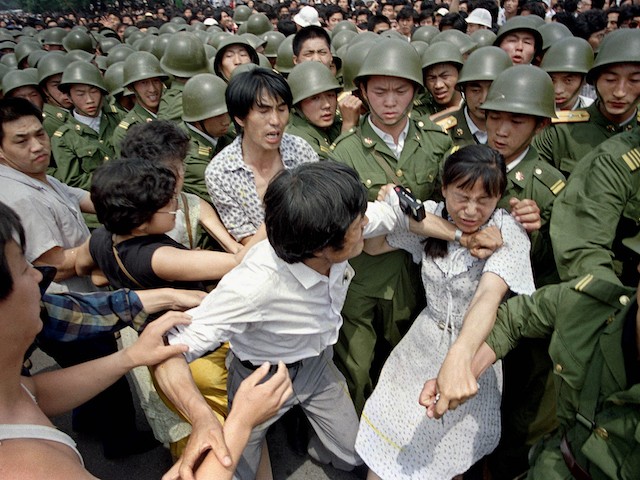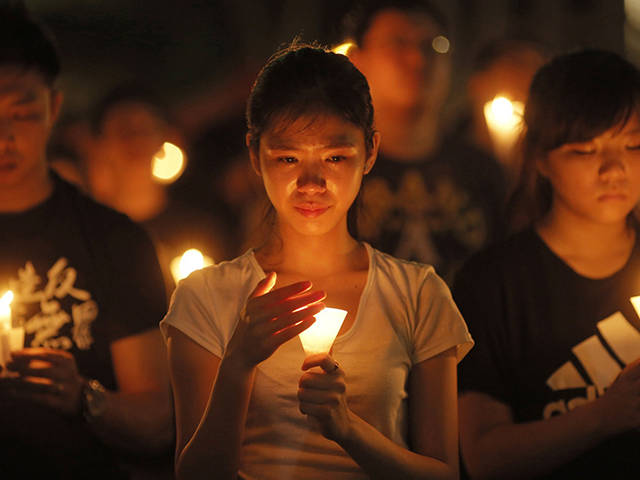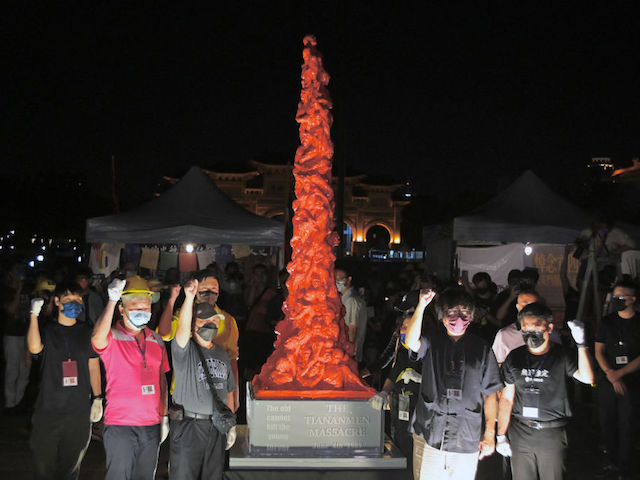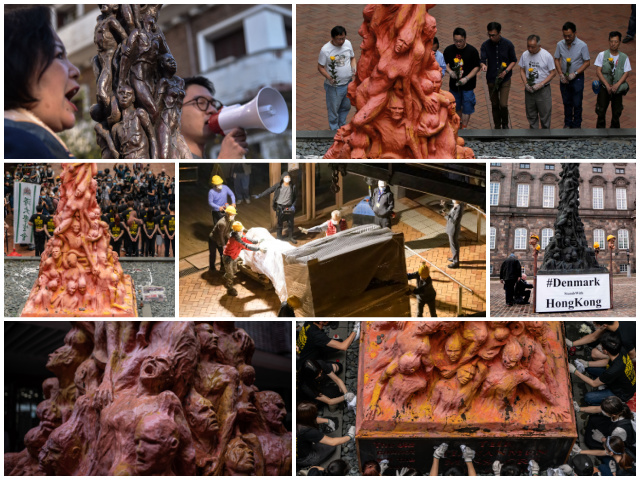Hong Kong’s Beijing-controlled chief executive, John Lee, insisted on Thursday that his government should identify books with “bad ideologies” – such as those that tell the truth about the Tiananmen Square massacre – and remove them from public libraries.
Lee, who was Hong Kong’s security chief before succeeding Carrie Lam as chief executive in May 2022, was meeting with members of the Legislative Council (commonly known as “LegCo”) when a lawmaker challenged the removal of Tiananmen accounts and other books from libraries as a violation of the semiautonomous island’s nominal free speech guarantees.
“Books we are lending to the public are those recommended by the government. We would not recommend books that are illegal, have copyright issues or those with bad ideologies,” Lee replied.
Skeptical lawmakers noted that the national security law has been used to shut down publications and terrorize Hong Kongers away from events that might bring down the wrath of Lee’s paranoid security state. A prominent example last week was the abrupt termination of a hugely popular 40-year-old comic strip from artist Wong Kei-kwan, who uses the pen name “Zunzi.”
Zunzi’s venerable feature was apparently canceled because he dared to draw a strip that suggested Hong Kong officials are chosen based on their political reliability, not their ability or good health. The strip was killed less than 24 hours after government officials denounced his (rather obviously accurate) satire as “distortive” and “unethical.” Collections of Zunzi’s work were yanked out of libraries along with Tiananmen Square books.
Lee bizarrely insisted Hong Kong’s free speech protections are perfectly intact, as long as no one says anything the government dislikes. He said the national security law provided a clear road map to free speech “if people paid attention carefully.”
Other books banned from libraries included the work of prominent dissidents such as Liu Xiaobo, Wang Dan, and Benny Tai, who might spend the rest of his life in jail for “illegally” telling voters to support candidates the Chinese Communist Party did not like. The regime was sufficiently rattled by Tai’s “strategic voting” plan that it decided only Communist Party candidates were eligible to stand for election in the legislature at all.
On Tuesday, Lee responded to criticism of his book-banning spree by saying that as long as the books are “accessible by people in private book shops,” his actions should not be denounced as censorship.
“What libraries need to do is to ensure that there’s no breach of any laws in Hong Kong, including of course, copyrights etc, and also if they spread any kind of messages that are not in the interests of Hong Kong,” Lee said.
On Thursday, the Japan Times discovered that not only have books about Tiananmen Square been removed from libraries, but all mention of them has been deleted from online catalogs. The Washington Post noted that documentaries made by Hong Kong public broadcaster RTHK have also been removed.
The increasingly authoritarian Hong Kong government has been steadily cracking down on Tiananmen Square observances, in line with the Chinese Communist Party’s orders to erase the June 4, 1989, atrocity from history.

A young woman is caught between civilians and Chinese soldiers, who were trying to remove her from an assembly near the Great Hall of the People in Beijing, June 3, 1989. Pro-democracy protesters had been occupying Tiananmen Square for weeks (AP Photo/Jeff Widener).
Hong Kong once hosted the world’s largest and most moving vigils for the dead of Tiananmen, with thousands of candle-bearing mourners packing the city’s Victoria Park. The Chinese Communist Party used the Wuhan coronavirus pandemic as an excuse to begin banning these memorials in 2020.

In this June 4, 2015 file photo, people attend a candlelight vigil at Victoria Park in Hong Kong. The group, Hong Kong Alliance in Support of Patriotic Democratic Movements of China, that had organized annual vigils in remembrance of victims of the Chinese military’s crushing of the 1989 Tiananmen Square pro-democracy protests voted to disband Saturday, Sept. 25, 2021 amid an ongoing crackdown on independent political activism in the semi-autonomous Chinese city (AP Photo/Vincent Yu, File).
Later, Hong Kong officials dropped all pretense of pandemic safety and warned that Tiananmen vigils could violate the draconian “national security law” that was imposed by Beijing to crush the massive 2019 pro-democracy protests. The law in question effectively criminalizes all dissent from, and criticism of, the Chinese government.
The national security law was also invoked to eliminate monuments to Tiananmen Square victims in Hong Kong, including the world-famous “Pillar of Shame,” a (deliberately) disturbing 26-foot sculpture that looks like a column of entwined human bodies.

People chant slogans next to a “Pillar of Shame” during a vigil on the 33rd anniversary of the 1989 Tiananmen Square pro-democracy protests and crackdown at the Chiang Kai-shek Memorial Hall in Taipei on June 4, 2022 (Photo by Sam Yeh / AFP) (Photo by SAM YEH/AFP via Getty Images).
The Pillar of Shame was created by Danish sculptor Jens Galshciot and displayed at the University of Hong Kong for many years, with field trips to the annual Tiananmen vigils in Victoria Park, before university officials wrapped it in cloth and dragged it away in June 2022.
The University of Hong Kong said it has to mothball Galschiot’s statue because it was threatened with prosecution under the national security law for displaying it. Galschiot unsuccessfully pleaded with the university to return the statue to his care and even contemplated legal action to retrieve it.
To Galschiot’s surprise, the Pillar of Shame turned out to be stored at Kadoorie Center, an agricultural facility operated by the University of Hong Kong. On May 5, exactly one month before the annual Tiananmen commemoration, Hong Kong’s “national security police” seized the sculpture because it was supposedly evidence in an investigation of “incitement to subversion.”
Galschiot denounced the seizure of his work as “outrageous” and said the subversion charge “makes no sense” to him since he owns the statue and was proud to display it.

Kin Cheung/AP; Liselotte Sabroe, Anthony Kwan, Andreas Solaro, Louise Delmotte, Alex Chan/Getty Images
“The initiative has been mine, nobody has incited me to put it there, and I personally paid all expenses for it. I cannot see how they can use the sculpture under the national security law,” he said

COMMENTS
Please let us know if you're having issues with commenting.